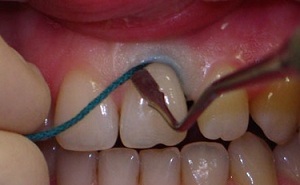 Gum retraction is a dental manipulation, the essence of which is the short exposure of the neck and root of the tooth.
Gum retraction is a dental manipulation, the essence of which is the short exposure of the neck and root of the tooth.
Thus, the level of the gums decreases. The purpose of this manipulation is to accurately detach impressions before dental prosthetics. Also, retraction is used for filling the carious oral cavity and before teeth whitening( in some cases).
Contents
- Why is gum exfoliation
- Used techniques
- Essential equipment and materials
- Consequences and complications
Why is gum exfoliation
Retraction is done in such cases:
- Teeth protection during whitening .Since the contact of the whitening gel with the tissues of the gums may cause a burn.
- Gum protection against damage in the treatment of caries .The probability of damage to the gingival margins arises in the treatment of cervical caries and the area of the intervental lumen.
- Orthopedic treatment of with the fit of veneers or crowns.
- Stop bleeding during treatment of caries .
- Conducting hygienic measures in the cervical area .For example, it can be the elimination of stones and plaque by ultrasound. When applying retraction, access to all dental layers is provided.
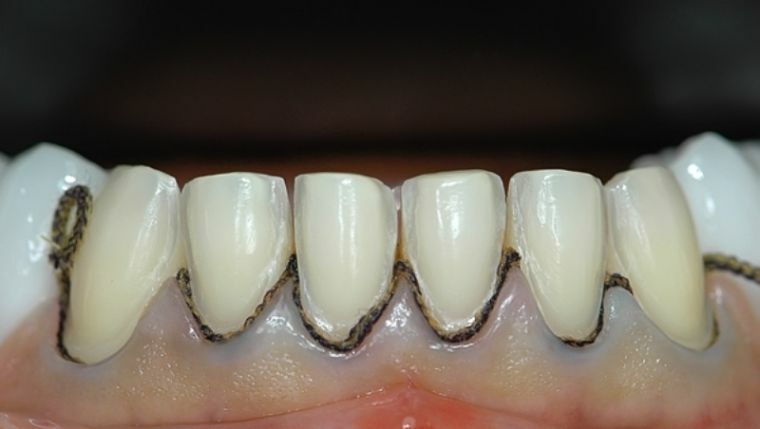
Methods used
To date, gum retraction is performed using four methods:
- Chemical method .When performing gum pulling in this way, specialized pastes, solutions and gels are used,
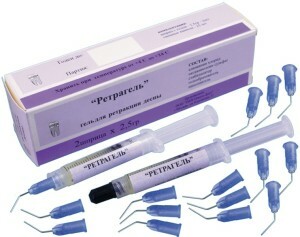
Gel for retraction
provoking contraction of the gingival tissue, which contributes to its immediate withdrawal. It should be noted that this method can not be used for all patients. This is due to the fact that most of the drugs are adrenaline, which can raise blood pressure, which provokes frequent heartbeats. In addition, the gingival tissue does not always perceive the chemical. For chemical retraction, agents containing alumina and kaolin are used, since they are considered the most sparing. When using chemicals, you should monitor the duration of their action to prevent the occurrence of a burn.
- Surgical method .When it is used, the proportion of the gingival tissue is completely removed. To do this, use a conventional scalpel or surgical electrical appliances. The described method is used only in two cases: the need for corrective gums or if other existing methods of pulling are not suitable.
- Mechanical method .When gums are pulled back, caps, threads and rings are applied, which are inserted under the gum and thus pull it down. This method is rather painful, therefore it needs to be carried out under anesthesia. Implementation of mechanical retraction takes a very long time, so today it is used quite rarely. The disadvantage of this method is also that mechanical damage to the gums or the attachment of the tooth can cause severe bleeding.
- Combined method .All three of the above methods are rarely used separately. Basically, chemical and mechanical separation methods are combined. In the implementation of a combined flaking technique, refractive filaments or rings pre-impregnated with a chemical composition are used. Thanks to this solution, all painful sensations disappear, and there is no bleeding of the gums.
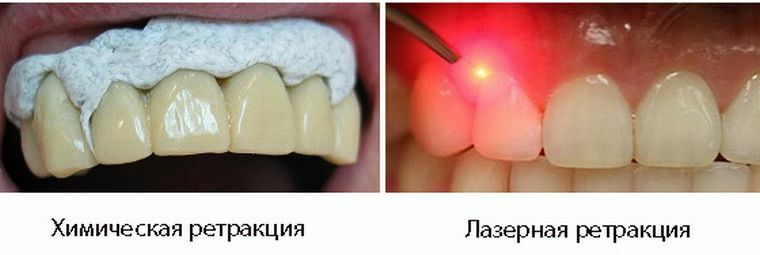
Recently, new methods of retraction have started to appear, using diode lasers. This method is painless and absolutely safe. In general, this procedure is best done with the use of painkillers.
Required equipment and materials
During the retraction, special threads are used most often. By their structure, they can be cotton or linen( in most cases, dentists use cotton threads).
According to the manufacturing method, the yarns can be:
- braided - have sufficient hardness and do not have any defibration;
- twisted - when packing into the gingival sulcus, a rapid defibration occurs;
- knitted - have the appearance of histogenous nodular tubes that have a high absorption capacity.
Threads can be produced both with impregnation( vasoconstrictor, hemostat), and without it. Threads without impregnation( impregnation) are used in the presence of periodontal diseases. As the impregnation, the following chemical agents are used:
- Adrenaline hydrochloride .It is a vasoconstrictor, due to which the qualitative homeostasis is carried out and the tissue size is reduced. This is the most powerful tool used to exfoliate the gums. This homeostatic is forbidden to apply to patients who have arterial hypertension.
- Iron sulphate .Produced in the form of gels and essences. Specialists do not recommend the use of this drug in combination with epinephrine hydrochloride. It also can not be used for aesthetic restoration of frontal teeth.
- Aluminum chloride .Has a hemostatic effect. The product is produced in the form of gels, solutions and pastes.
- Aluminum sulphate .Sold in the form of essences and used to impregnate yarns.
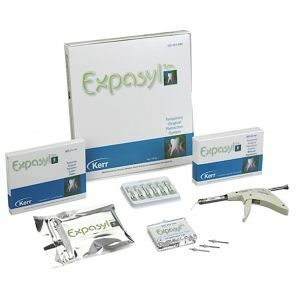 In most cases, Retrac, MagicFoam Cord and Expasyl are used to separate the gums from the teeth.
In most cases, Retrac, MagicFoam Cord and Expasyl are used to separate the gums from the teeth.
They are let into the gingival furrow from the syringe, and after hardening, chemical and mechanical retraction occurs.
For the print during preparation, one-time unidosomes are used.
What retraction threads are used in dentistry:
Consequences and complications of
The very first complication that can occur after retraction is the inflammatory process in the work area. If the dentogingival edge is very thin, it is best not to carry out gum pulling by a mechanical method. It is also possible to form defective pockets. When periodontitis, gum pulling is carried out in special cases, since this can only aggravate the situation.
Retraction can lead to such consequences as exposure of the roots of the teeth. This problem arises from the excessive deepening of the pack of retraction threads. 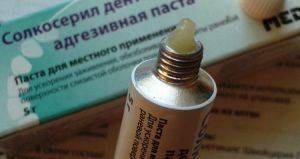
To prevent various complications, before the procedure it is necessary to establish the depth of the gingival recess. When using gels and pastes, you must first conduct an allergy test and check the gums for inflammation.
To avoid any of the above consequences after the intervention, the first six to eight hours after the manipulation should not use hot drinks and food. The brush for cleaning teeth must have a soft bristle.
You can also use medicinal pastes with healing properties. To reduce pain and eliminate puffiness, you can use special gels( Dental, Solcoseryl, etc.).
